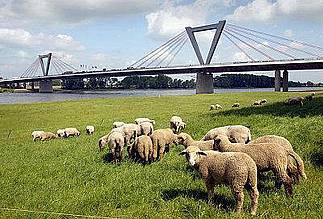Advantages of slag products
So far, no case of negative environmental impact by ferrous slag has been reported when slag was used strictly in accordance with the requirements of the relevant regulation(s).
The use of ferrous slag – crystalline or vitrified – instead of natural rocks such as limestone or granite not only saves the energy that may be required to mine natural aggregates, but also eliminates the negative impacts associated with mining such as effects on biodiversity or disruption of the landscape.
In the case of cement manufacture, the use of granulated blast furnace slag instead of clinker reduces the overall process CO2-emissions as a result of fuel savings and avoidance of sintering limestone or other calcareous materials.
Calculations made by the German FEhS – Institute for Building Materials Research have shown that CO2-emissions were reduced by about 22 million tonnes in the cement industry (hence in the industry as a whole) in Europe in 2008, because of the use of 24 million tonnes of granulated blast furnace slag.
The reduction is equivalent to the Kyoto objective of countries like Belgium and The Netherlands together. Thus, blast furnace slag contributes positively to the sustainability of the whole European industry and in the fight against climate change.

